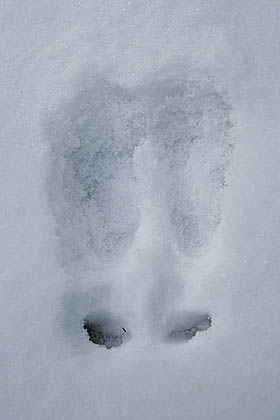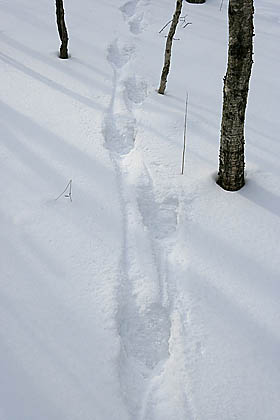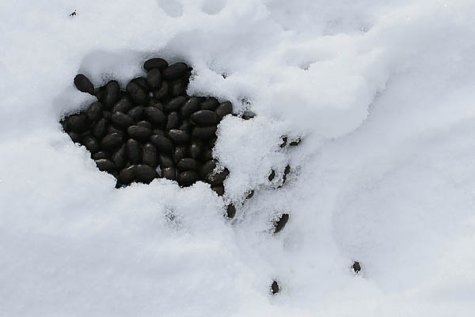About elk tracks in forests
Photos: Arne Ader
Translation: Liis
Elk imprint.
| European elk, elk, moose | Põder | Alces alces |
The elks (moose), the largest of our deer group animals, really get around. The height of a mature elk bull is just under 2 metres at the shoulders, the length three metres and it weighs up to six hundred kilos - impressive.
Elks spend the winter in dryish or upland forests, in the spring they move to water meadows, bogs, marshy forests with better feeding opportunities.
Elk tracks can’t be mistaken for anything else. The imprints of an adult animal are 12 to 16 centimetres long. In the imprints of the forefeet pastern marks can be seen. Moving at normal pace, the length of its stride is one and a half up to two metres. The track size and stride length of the calves are smaller – it is clear at once who walked there.
Elk path in birch coppice in a bog. Ristsaare, Alam-Pedja.
The hind foot steps nearly into the imprint of the forefoot, or just a little behind. The hoof tips often make parallel lines in the snow, but it depends on the snow quality if these lines keep. In deep snow the elk doesn’t lift its feet very high up, then we will see a "walk furrow“ ploughed up.
Elk droppings.
About the droppings too: two-three centimetres long, and a couple of centrimetres wide. Sometimes the droppings are round; that depends on the food and the particular individual. Winter droppings contain more fibres: the diet includes twigs and branches, and that shows.
... and by the way, in the first half of this week there will be the first fall of spruce needles everywhere.











